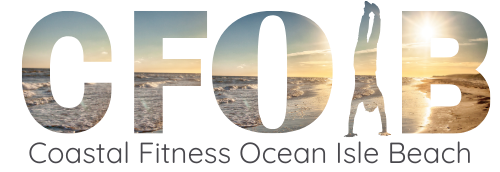As you know this Wednesday, October 5th, CrossFit Ocean Isle Beach is hosting Amazing “Grace” to benefit Mammograms In Action or MIA. MIA is a 501(c)3 non-profit breast cancer organization with the mission to provide funding for qualified low-income and uninsured women and men who need screening and/or diagnostic procedures in the prevention of breast cancer.
Prevention. Hmmm, CrossFit is sorta like prevention, isn’t it? At least I like to think of CrossFit that way. We train to prevent Type II Diabetes, heart disease, stroke, obesity, high blood pressure, Osteoporosis, and even depression. Whether you realize it or not- every time you pick up that barbell or run that 400 meters you are one rep closer to staying healthy. What we do is train for life. We train so that we can enjoy a good quality of life, for a long time to come.
CrossFit is your preventative medicine.
So why not use our exposure to also help prevent breast cancer by supporting MIA? We urge you to join us this Wednesday for a great workout with friends & family for a great cause. Remember you do not have to participate in the workout, just come & show your support. No donation is too small.
MIA works directly with local physicians and health care providers to identify candidates who are in need of assistance, having been turned away from screenings because of their age, their lack of ability to pay or because they have lost their health insurance with no other means of payment. MIA provides funding for diagnostics and biopsy as prescribed by a medical doctor through grants to locally based breast centers and breast health care providers.
Mammograms. A mammogram in an x-ray of the breast that is designed to detect breast cancer. A mammogram along with a clinical breast exam (an exam done by your dotor) is the most effective way to detect breast cancer early. Mammograms have both benefits and limitations. For example, some cancers can’t be detected by a mammogram, but may be detectable by breast exam.
A mammogram is a safe test used to look for any problems with a woman’s breast. The test uses a special, low-dose x-ray machine to take pictures of both breasts. The results are recorded on x-ray film or directly onto a computer for a radiologist to examine. Mammograms allow the doctor to have a closer look for breast lumps and changes in breast tissue. They can show small lumps or growths that a dotor or woman may not be able to feel when doing a clinical breast exam. A Mammography is the best screening tool that doctors have for finding breast cancer.
If a lump is found, your doctor may order other tests, such as ultrasound or a biopsy, a test where a small amount of tissue is taken from the lump and area around the lump. The tissue is sent to a lab to look for cancer or changes that may mean cancer is likely to develop. Breast lumps or growths can be benign (not cancer) or malignant (cancer).
Finding breast cancer early means that a woman has a better chance of surviving the disease. There are also more choices for treatment when breast cancer is found early.
There are three types of mammograms:
Screening Mammograms
Mammograms can be used to check for breast cancer in women who have no signs or symptoms of the disease. This type of mammogram is called a Screening Mammogram. Screening Mammograms usually involve two x-ray pictures, or images, of each breast. The x-ray images make it possible to detect tumors that cannot be felt. Screening mammograms can also find microcalcifications (tiny deposits of calcium) that sometimes indicate the presence of breast cancer.
Diagnostic Mammograms
These are done when a woman has symptoms of breast cancer or a breast lump. This mammogram takes longer than screening mammograms because more pictures of the breast are taken.
Digital Mammograms
Digital Mammograms take an electronic image of the breast and store it directly in a computer. Current research has not shown that digital images are better at finding cancer than x-ray film images. (Source: http://www.mammogramsinaction.org/)







